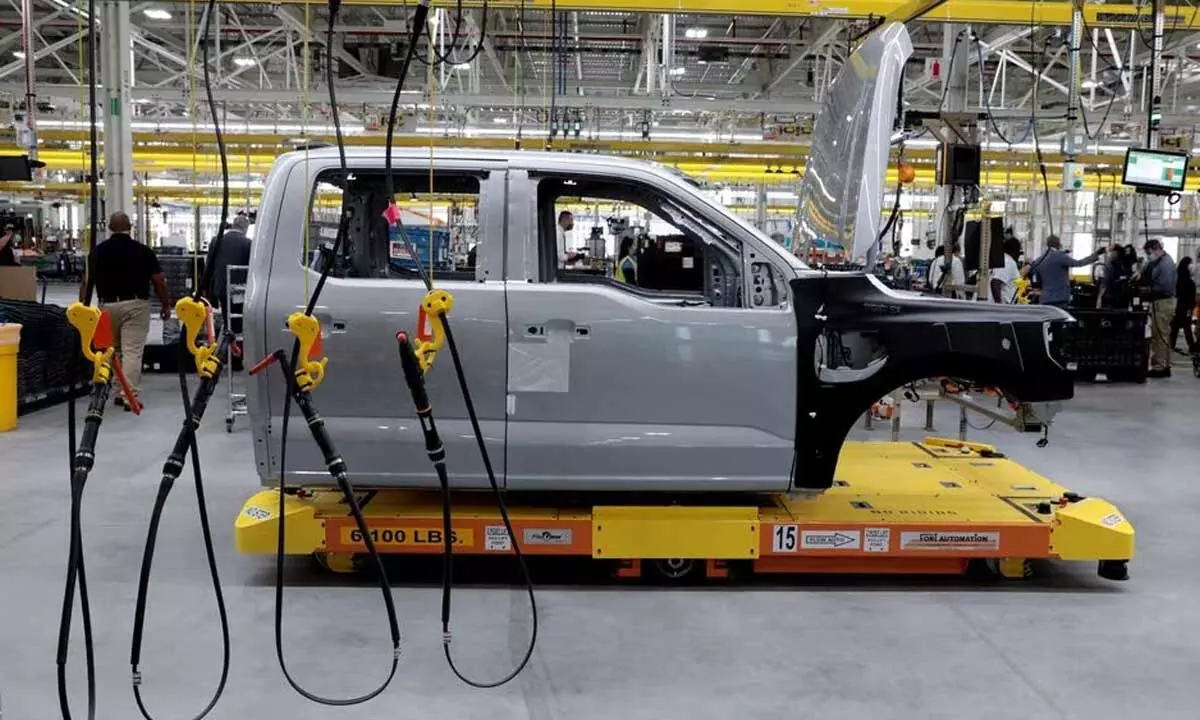UAW strike could upend GM, Ford financial strategies
Share :

General Motors (GM.N) and Ford (F.N) have laid out ambitious plans to spend billions developing new electric vehicles while returning capital to investors, all funded by robust profits from combustion trucks and SUVs.
DETROIT: General Motors (GM.N) and Ford (F.N) have laid out ambitious plans to spend billions developing new electric vehicles while returning capital to investors, all funded by robust profits from combustion trucks and SUVs.
The mounting costs of the United Auto Workers strikes, and the eventual rich contract settlements, are putting those plans at risk, analysts said.
"Reduction in capital spending, delayed EV targets, greater sharing of costs, and other changes to the corporate 'portfolio' could be on the horizon," Morgan Stanley analyst Adam Jonas told clients in an Oct. 12 note.
GM will report third-quarter results Oct. 24, with Ford following on Oct. 26. GM has already telegraphed a $200 million hit to third quarter profits from strike-related costs.
The strikes have costing GM and Ford more than $500 million, JP Morgan analyst Ryan Brinkman estimated in a note Monday. Ford is now losing $44 million a day, while GM is losing $21 million a day, Brinkman estimated.
Ford was hit hard Oct. 11 when UAW President Shawn Fain ordered a walkout from Ford's Kentucky Truck assembly plant, its most profitable single operation globally. Kentucky Truck generates $25 billion in revenue per year - or $48,000 per minute, as Fain put it in a video address Friday.
After a senior Ford executive said the automaker had reached the limit of what it could spend on a new union contract, Fain replied: "Go get the big checkbook. The one Ford uses when it wants to spend millions on company executives or Wall Street giveaways."
Ford spent $3.8 billion on dividends through the first half of this year, according to its most recent financial report. The company told investors in May it planned to distribute 40% to 50% of free cash flow to investors each year via dividends and share buybacks.
Fain points to a 1,500% increase in the money spent on share buybacks by the Detroit Three over the past four years to argue the automakers can afford substantial UAW wage increases.
In August 2022, GM's board increased funding for share buybacks to $5 billion from $3.3 billion previously. The company reported spending $869 million to buy back shares during the first six months of 2023, and paid out $250 million in stock dividends during that time.
GM and Ford have both already scaled back planned investments in EV and battery plants.
In July, GM trimmed its planned spending this year on electric vehicles and battery plants to between $11 billion and $12 billion. Previously, the company had said it could spend up to $13 billion this year on EV and battery plant development. The company also raised its cost-cutting target through next year by $1 billion.
Ford earlier this month hit the brakes on a planned $3.5 billion battery plant in Marshall, Mich. Farley warned more cuts to Ford's future product investments could come if there is a "bad deal" with the UAW.
GM and Ford shares have fallen sharply since July as the standoff with the UAW has intensified. GM shares traded near a 52-week low on Friday.
Still, some investors are optimistic that dividends and share buybacks can continue.
"At least in the short term, I don't think we have significant concern around the dividend being suspended or share buybacks being limited," said Tim Piechowski, portfolio manager with ACR Alpine Capital Research, which owns GM shares.
Investments in electric vehicles should continue, he added, saying that his bigger concern was if the companies had to draw down cash if there is a full work stoppage.
GM has set up a new, $6 billion credit line as insurance against an expanded UAW strike.














